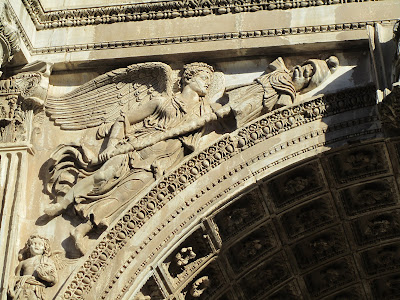 |
| Detail of the Arch of Septimius Severus, Roman Forum |
 |
| You can see the Phrygian cap on Liberty herself |
I didn't realize that the Phrygian cap also had special meaning in Classical Greece and Rome, but the Wikipedia enlightened me. To Greeks, the cap, which was originally worn by—go figure—Phyrigians**, denoted a non-Greek, and thus, symbolically, an outsider. To Romans, the cap denoted a free man, which eventually led to its symbolic identification with liberty, and thus to its being a hot commodity in the 1790s.
I thought it would be fun to include a knitting pattern for a Phrygian cap, and the first thing I found when I went looking for a pattern was a blog post from a woman who is—delicious irony here—knitting Phrygian caps for people at Occupy D.C. She includes her knitting pattern if you want to try. I think red is the obvious color choice.
*Who's Mme Defarge? Drop everything and go get yourself a copy of Dickens's A Tale of Two Cities. You will meet Mme Defarge. You will never again look at someone knitting without getting a frisson of dread. Go. Read. Now.
**Phrygians were from central Anatolia (modern-day Turkey and environs).
No comments:
Post a Comment